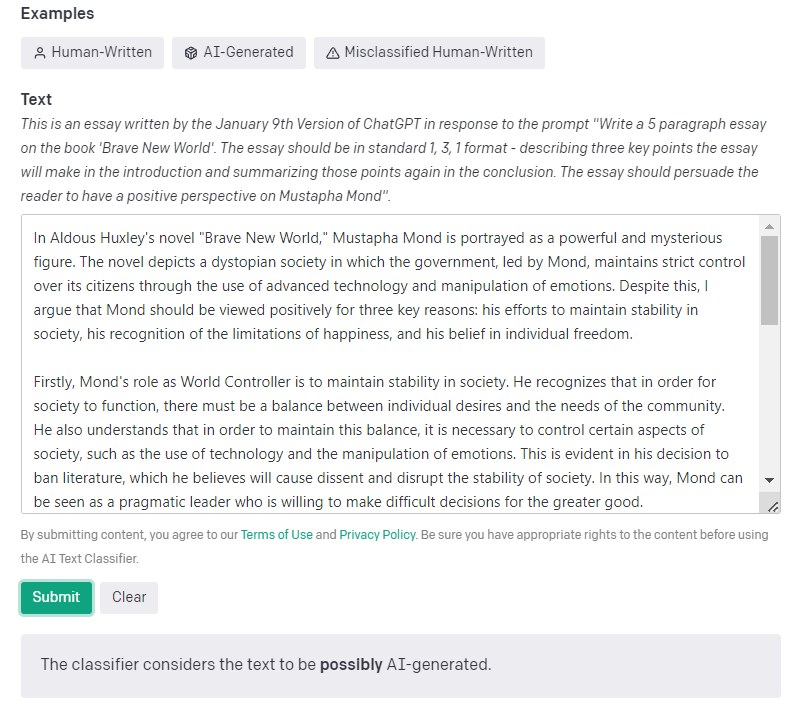
ChatGPT has become the talk of the internet in recent times for it’s AI writing capabilities, and the company behind it is OpenAI. And now, OpenAI introduces a new tool to distinguish human-written from AI-generated text, using a web-based AI Text Classifier that predicts the likelihood of text being written by a human or AI.
Microsoft recently made a multiyear, multibillion-dollar investment in OpenAI, extending its partnership with the company.
We’re developing a new tool to help distinguish between AI-written and human-written text. We’re releasing an initial version to collect feedback and hope to share improved methods in the future. https://t.co/4dQE3dX6vX
— OpenAI (@OpenAI) January 31, 2023
New AI Text classifier
OpenAI states that it has trained a classifier to differentiate between human-written and AI-generated text from various sources. It acknowledges that it’s not possible to detect all AI-written text with certainty, however, the classifier is expected to help counter false claims of human authorship for AI-generated text, such as in the spread of misinformation, academic dishonesty, or deceptive AI chatbots posing as humans.
OpenAI also stresses that the classifier has limitations and should not be solely relied upon. It should be used as supplementary to other methods to determine the origin of text.
OpenAI highlights the following limitations of its classifier:
- The classifier is unreliable for short texts (less than 1,000 characters). Even longer texts may sometimes be mislabeled.
- Human-written text may be incorrectly but confidently labeled as AI-written.
- The classifier is recommended for use only with English text and may perform poorly in other languages and for code.
- The classifier cannot distinguish very predictable text. For example, it cannot determine if a list of the first 1,000 prime numbers was written by a human or AI, as the answer is always the same.
- AI-written text can be altered to avoid detection by the classifier, and it is unknown if detection has a long-term advantage, as the classifier can be updated based on successful evasion tactics.
- Neural network-based classifiers can be poorly calibrated and make extremely confident incorrect predictions for inputs that are very different from their training data.

Training the classifier
OpenAI explains that its classifier is a language model fine-tuned on a dataset consisting of pairs of human-written and AI-generated text on similar topics. The data was collected from various sources believed to be written by humans, such as InstructGPT’s pretraining data and human-generated responses to prompts.
Impact on educators and call for input
OpenAI acknowledges the significance of identifying AI-generated text and its impact on education. It has created a resource guide for educators on using ChatGPT, including its capabilities and limitations. OpenAI is engaging with educators in the US to better understand their experiences and gather feedback.
They invite those directly affected by these issues, including educators, students, and education service providers, to provide feedback and any helpful resources they may have. The company aims to deploy large language models in a safe and responsible manner, in close collaboration with impacted communities, as part of its mission.
Try AI Text Classifier work-in-progress yourself by visiting here
Announcing the new AI Tool, OpenAI shares that
Our intended use for the AI Text Classifier is to foster conversation about the distinction between human-written and AI-generated content. The results may help, but should not be the sole piece of evidence, when deciding whether a document was generated with AI. The model is trained on human-written text from a variety of sources, which may not be representative of all kinds of human-written text.